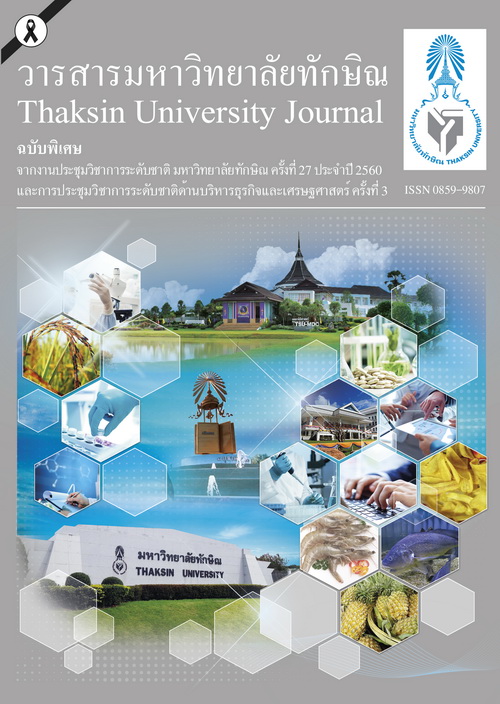Effect of Plant Spacings and Organic Fertilizer Quality on Growth and Yield Components of Riceberry in Tamod District, Phatthalung Province
Main Article Content
Abstract
Riceberry was well known a new cross-line variety and suitable for organic rice production system, in Southern Thailand, loss in rice yield causes from conventional rice cultivation using chemical farming system. In this study the effects of transplanted spacing and quality of organic fertilizer were examined on growth and yield components of Riceberry. Factorial in CRD was used for experimental design with 3 replicates and 2 factors: (1) transplanted spacing (30x30 cm. and 40x40 cm.) and (2) quality of organic fertilizer (ICOFIS’s (the Institute of Community Operation for Integrated Studies Thaksin University) and commercial organic fertilizer). Field experiment was conducted during dry season at Tamod District, Phatthalung Province. The results showed that growth and yield components were not significant different between transplanted spacing. However, Riceberry yield transplanted at spacing 30x30 cm was significantly higher than spacing 40x40 cm. Although, height per hill, the number of panicles per hill, number of filled grains per panicle, grain weight per panicle and
yield per unit area from ICOFIS’s organic fertilizer were significantly higher than the commercial organic fertilizer. Interaction between 30x30 cm. transplanted spacing applied with ICOFIS’s organic fertilizer can increase Riceberry yield per unit are

